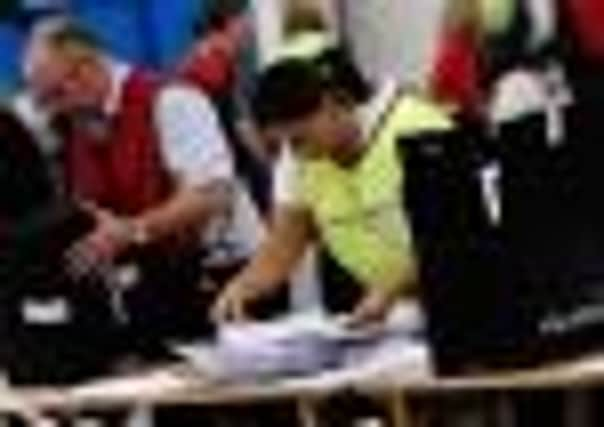Holyrood rejects calls for ‘random’ ballot papers


There were calls for a change of system after studies showed that at the last elections in 2007 – the first where voters ranked candidates in order of preference – politicians whose names came nearer the start of the alphabet were more likely to get elected than those who came after them.
At least six senior Edinburgh councillors who lost their seats could have been affected.
Advertisement
Hide AdAdvertisement
Hide AdBut after a consultation, the government has decided to stick with the traditional alphabetical order on the grounds it is what voters are used to.
The Single Transferable Vote system, introduced in 2007, means there can often be more than one candidate from the same party standing in the same multi-member ward.
However, research suggests there is an in-built advantage for those whose names appear higher up the ballot paper.
In Edinburgh, several well-known council figures failed to get re-elected when standing with colleagues whose names came earlier in the alphabet.
In Leith Walk ward, Labour’s Trevor Davies failed to get back in while party colleague, Angela Blacklock did. In Portobello/Craigmillar, Labour’s Maureen Child was re-elected but party colleague Lawrence Marshall was not. Liberal Democrat Sue Tritton failed to get re-elected in Meadows/Morningside, although her colleague Marilyne MacLaren got in.
In Southside/Newington, Liberal Democrat Gordon Mackenzie was returned, while Liz O’Malley was not. Long-serving councillor Tom Ponton lost his seat after fellow Lib Dem Tim McKay polled more first-preference votes in Inverleith.
In the same ward, Tory Lindsay Paterson polled more first-preference votes than Iain Whyte, although Councillor Whyte got elected on transfers while Ms Paterson did not.
Research found that, across Scotland, there were 247 cases where candidates who appeared higher on the ballot paper got more votes than a candidate from the same party further down the list, and only 53 cases where the lower-placed candidate got more votes.
Advertisement
Hide AdAdvertisement
Hide AdInternational elections expert Ron Gould, who conducted an investigation of the 2007 elections, recommended a public lottery to decided the order of candidates on the ballot paper.
And a government consultation document set out alternative options, including random or reverse alphabetical order.
Voting reform group Fairshare said the bias could only be removed by “full randomisation” on ballot papers. And Opt2Vote, part of the consortium which won the contract to provide electronic counting for the 2012 elections, said it had the technology to allow random ordering.
But many local authorities backed the traditional alphabetical order because that was what voters expected.
Former Tory group leader Iain Whyte said the government should have looked further at other options. He said: “It doesn’t seem fair that candidates are disadvantaged because of their name. I think they could have consulted more widely.”
A Scottish Government spokeswoman said: “We took the decision to keep the ballot papers alphabetical as it is consistent with other elections and widely recognised by voters.”